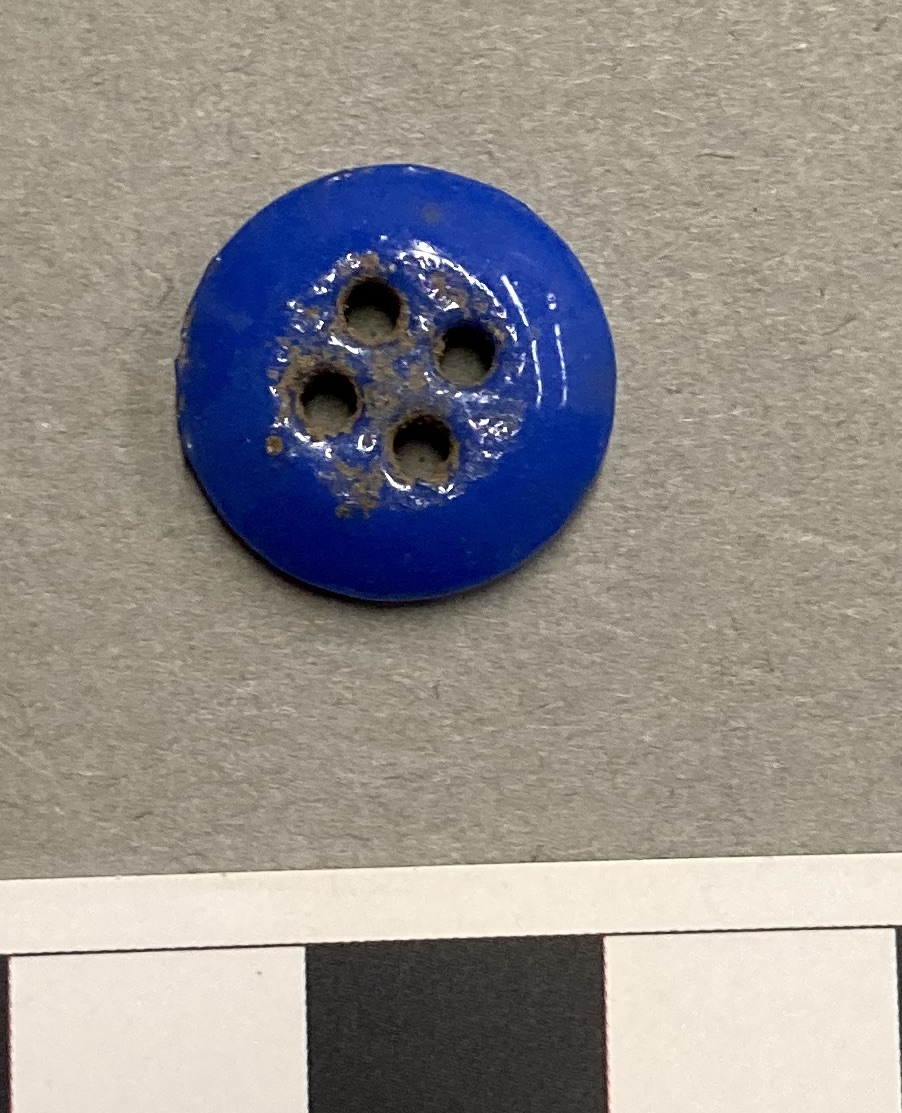
🪡Thread for late 19th-early 20th C. button identification, emphasis on diff. synthetics and organics. Dates for US contexts.
#archaeology #button #materialculture
1/?
#archaeology #button #materialculture
1/?

2/? HARD RUBBER
Sturdy synthetic. Generally has Goodyear backstamp; less commonly Novelty Rubber Co. or unmarked. Smells like rubber when heated. Molded.
Color: matte black; rarely brown. Opaque.
Date: post-1851.

Sturdy synthetic. Generally has Goodyear backstamp; less commonly Novelty Rubber Co. or unmarked. Smells like rubber when heated. Molded.
Color: matte black; rarely brown. Opaque.
Date: post-1851.


3/?
CELLULOID
V. light synthetic. “Bubble” buttons w/ thin dome of celluloid attached to a metal back. Solid celluloid buttons also produced. Molded or carved.
Color: All colors, imitation ivory common. Translucent to opaque.
Date: ca. late 19th-1930s.

CELLULOID
V. light synthetic. “Bubble” buttons w/ thin dome of celluloid attached to a metal back. Solid celluloid buttons also produced. Molded or carved.
Color: All colors, imitation ivory common. Translucent to opaque.
Date: ca. late 19th-1930s.


4/? CELLULOID cont'd
Very prone to decay, cracking, discoloration.
Need air--Do not store in closed containers—will self-destruct. Very flammable. Smells of turpentine/tree sap/mothballs when heated.
Very prone to decay, cracking, discoloration.
Need air--Do not store in closed containers—will self-destruct. Very flammable. Smells of turpentine/tree sap/mothballs when heated.

5/? CASEIN (Galalith)
Plastic made from milk protein and other ingredients. Lightweight. Often nibbled by insects. Under hot water or flame will smell like rotten milk/wet dog/bad. Molded.
Color: dyed in almost any color, often bright
Date: ca. 1900- present
Plastic made from milk protein and other ingredients. Lightweight. Often nibbled by insects. Under hot water or flame will smell like rotten milk/wet dog/bad. Molded.
Color: dyed in almost any color, often bright
Date: ca. 1900- present

6/? PHENOLIC RESIN (Bakelite)
Sturdy synthetic. Heat resistant. When heated will smell like formeldyhyde/Lysol. Molded or carved.
Color: true Bakelite is only black/dark brown. Catalin, a later phenolic resin came in wide variety of colors. Trans. to opaque.
Date: ca 1910-1960
Sturdy synthetic. Heat resistant. When heated will smell like formeldyhyde/Lysol. Molded or carved.
Color: true Bakelite is only black/dark brown. Catalin, a later phenolic resin came in wide variety of colors. Trans. to opaque.
Date: ca 1910-1960

7/? NATURAL HORN
Light, may be confused with synthetics. Often nibbled by insects. Under heat will smell like burning hair. Carved or molded, sometimes with stamped/impressed designs.
Color: light brown to black; translucent to opaque; sometimes variegated
Date: 1600-

Light, may be confused with synthetics. Often nibbled by insects. Under heat will smell like burning hair. Carved or molded, sometimes with stamped/impressed designs.
Color: light brown to black; translucent to opaque; sometimes variegated
Date: 1600-


8/? “COMPOSITION”
Synthetic buttons made from a variety of materials. May glitter. Molded
Color: A variety of ground colors are possible, generally dark gray to black. Opaque. May include brightly colored marbling/splotches.
Date: early 20th c.
Synthetic buttons made from a variety of materials. May glitter. Molded
Color: A variety of ground colors are possible, generally dark gray to black. Opaque. May include brightly colored marbling/splotches.
Date: early 20th c.

9/? VEGETABLE IVORY (Corozo or Tagua nut)
Nut with ivory-like grain. Utilitarian as well as fancy. When heated, has a nutty/woody smell. Carved.
Color: Natural nut is ivory-colored. Often dyed, may be printed. Typically matte. Opaque.
Date: early 20th c.


Nut with ivory-like grain. Utilitarian as well as fancy. When heated, has a nutty/woody smell. Carved.
Color: Natural nut is ivory-colored. Often dyed, may be printed. Typically matte. Opaque.
Date: early 20th c.



10/? PORCELAIN (Prosser molded)
Porcelain sew-thru buttons. Molded, with visible dimples on back from molding process.
Color: White most common, but many colors possible. Some buttons have painted or printed designs, those with small patterns known as "calico."
Date: post 1840


Porcelain sew-thru buttons. Molded, with visible dimples on back from molding process.
Color: White most common, but many colors possible. Some buttons have painted or printed designs, those with small patterns known as "calico."
Date: post 1840



11/ This covers most of the tricky ones, but there are many more, including natural materials like wood, shell, and bone, not to mention glass, metal and combos thereof. Check out @DAACSORG for guide to earlier buttons. What else would you like to see?
12/ To heat test your buttons, run briefly under v. hot water, or heat tip of pin over flame and poke in inconspicuous spot like inside hole or along back. Quickly sniff.
• • •
Missing some Tweet in this thread? You can try to
force a refresh






